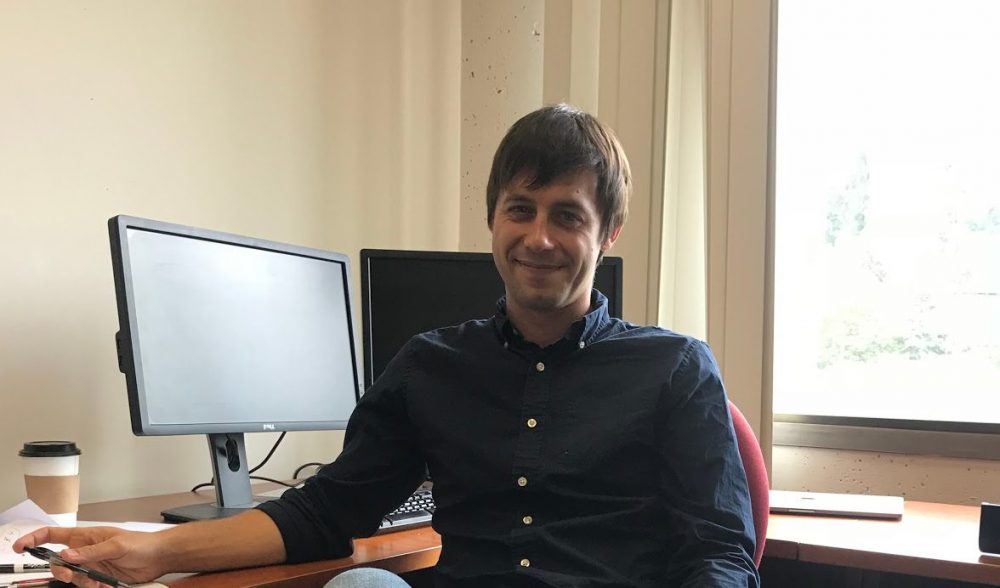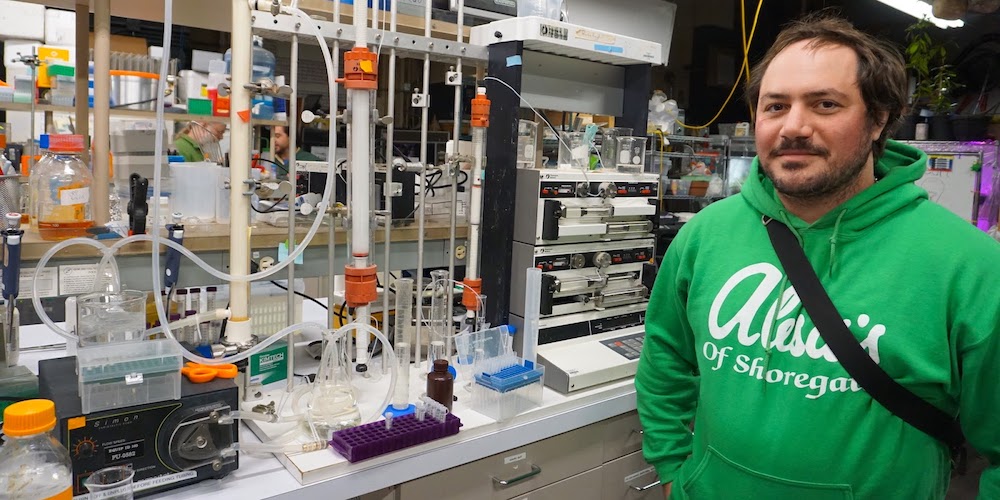
PARMITA DAS – JANUARY 29TH, 2020 COPY EDITOR: SHAWN SHIN
Christopher Walters is an Associate Professor of Economics at UC Berkeley and a Faculty Research Fellow at the National Bureau of Economic Research (NBER). His research focuses on Labor Economics and the Economics of Education. BER Staff Writer Parmita Das sat down with Professor Walters on 11 April, 2019 for the following interview:
Parmita Das: I’d like to begin by speaking to you about how your personal journey led you to economics and then delve deeper into your research interests. Could you begin by telling me about your background and how it helped shape your academic focus, and what experiences helped you find your passion for economics?
Christopher Walters: Sure! I went into college thinking I was going to do more humanities-related disciplines. I always kind of knew I liked school, so I knew I was probably going to go to grad school or something, but I didn’t know exactly what. I was interested in history and philosophy as an undergrad. I didn’t take any math my first couple of years, but then I sort of happened to take an economics class by chance and I realized it was a way of answering a lot of the same social questions I was interested in studying in a more quantitative way. That appealed to me as someone who had a little bit more math that I felt like I wasn’t able to use in my history classes, so I just started taking more and went from there.
PD: What inspired you to research into school choice and charter schools?
CW: That’s a good question too. A part of that was opportunity. In modern applied microeconomics, it is very important to have very detailed data on people’s choices and outcomes, so I was looking for an area where I could get a combination of the right data and the right question. In grad school I was sort of interested in labor markets and how people accumulate the kinds of skills that they sell on the labor market, but there is a lot of different sub-questions under that. In my graduate classes, readings, and recent work in top journals in this area, I got interested in the combination of choices and experiments that were on the frontier of the education literature. So I would say the modern applied micro paradigm, especially the way that I was taught in graduate school, is that you need a good experiment to be able to say anything interesting about a social science question. By that I mean a setting where you have something that looks like a well-controlled or randomized comparison where some group of people get access to some program or opportunity and another set of people randomly don’t. That’s like an experimentalist view of research.
I’m also interested in, at least to some extent, theoretical models of how people make choices and how their choices are linked to the benefits of the programs that are available to them. And so looking at the charter school literature, it was mostly focused on evaluating, in a kind of causal sense, what the impacts of charter schools are and other school-choice programs like that on the people that participate, since the programs choose through a lottery system. And so we like that as social scientists; that’s a well-controlled comparison and we’re confident interpreting the difference between lottery winners and losers as the causal effect of getting into this school and attending this school. But I noticed reading those papers and working on a couple early versions of those myself, that there wasn’t much analysis in the literature of which people were entering those experiments and why they were. So that’s why I got interested in the topic. I was interested in modeling exactly who is selected into the opportunity to attend a different school than your default neighborhood option, and how that decision is linked to the benefit for the kids or for their family. So the combination of being attracted to the experimentalist, clean, and causal identification you get from lotteries with the opportunity to model people’s choices with the administrative data on who is and is not applying and what their backgrounds look like, is what led me to my work on that topic.
PD: What are some areas you are looking into now and how are you looking to collect your data?
CW: A lot of my work is secondary analysis of existing data sets: either experiments that other people have run, or administrative datasets that have something that looks like a quasi-experiment, like lotteries that I mentioned. I have a few different projects but most of them have that feature, in one way or another. I have a couple projects on the Head Start program, which is a public preschool program for underprivileged kids in the United States. In that strand of my work, I’m reanalyzing a large-scale experiment that the Department of Health and Human Services ran on the Head Start program, where people were randomly admitted or not admitted to Head Start. I’m trying to understand what we can learn from that: who benefits from the program and how that relates to choices to participate. And so that’s a secondary analysis on an existing experiment that someone else ran. In my work on school choice and school assignment mechanisms, I’m using administrative data on people’s educational decisions and school enrollments that’s generated as part of the natural process of managing a large, urban school district and figuring out who’s going to what school and what their outcomes look like. The way I’m collecting most of my data is opportunistic in some sense—it’s like data that’s generated and out there in the world, either by previous experiments or by government bodies that are implementing or managing programs—and I’m looking for opportunities to use that sort of data to answer questions about the effects of programs on people’s outcomes.
PD: We learned in Econ 2, a basic economics class, that the return on investment in human capital decreases as a person progresses through their education. So, do you think the outcome or decision-making mechanism would change for that person, and would differ from the work you did on charter schools for example?
CW: I’m not sure I totally agree on the premise of that question. That question is premised on the idea that the return on human capital investment is largest in the early years of schooling. There’s certainly a lot of evidence that highly effective preschool programs have very large social returns. And I think that evidence is convincing, but I think there’s also more recent evidence that even at later stages in their career—like middle and high school, or even college—there is pretty large returns on human capital investment as well. For example, for marginal college students in the United States, in my view, some of the best evidence suggests that the return to a year of college for students at the margin between attending a four-year college and not is something in the order of 10% per year or higher. I’m referencing some research by Seth Zimmerman, who’s an economist at the University of Chicago School of Business. I’m not sure all economists would agree with me, but I think our best evidence suggests there’s actually pretty large returns to human capital investment at all different stages of the educational career, including the college attendance decision.
PD: So what made the choice of subfield in economics clear for you? What made you decide on labor economics as your focus?
CW: I think my choice to focus on labor instead of other subfields of economics is a combination of the set of questions you get to answer in labor and the sort of research philosophy of the field, which are linked to each other. The questions that labor economists focus on are very intimately linked to actual, concrete measures of well-being in people’s lives—their wages, their employment outcomes, what their careers look like. It’s very practical and concrete, and not very abstract. I was kind of attracted to that set of questions; answering questions about real sources of well-being or lack thereof in people’s lives. I think because of that focus on those sorts of questions, labor is also, from a methodological perspective, a very practical field. We’re interested in developing methods that can actually be used in real datasets to answer important policy questions, and I was attracted to those methods as well, in addition to the questions.
PD: So what made the question of “Industry or Grad School” clear to you?
CW: I’m not sure. I never had a real job and I felt like I was pretty good at school, and I decided I was gonna keep doing it.
*both laugh*
PD: That’s a fun answer. It was a pleasure to interview you. Thank you for your time!
Editor’s Note: If you’re interested in learning more about labor economics, we had a graduate student interview that touched on similar topics, linked here.
Featured Image Source: Parmita Das
Disclaimer: The views published in this journal are those of the individual authors or speakers and do not necessarily reflect the position or policy of Berkeley Economic Review staff, the Undergraduate Economics Association, the UC Berkeley Economics Department and faculty, or the University of California, Berkeley in general.



